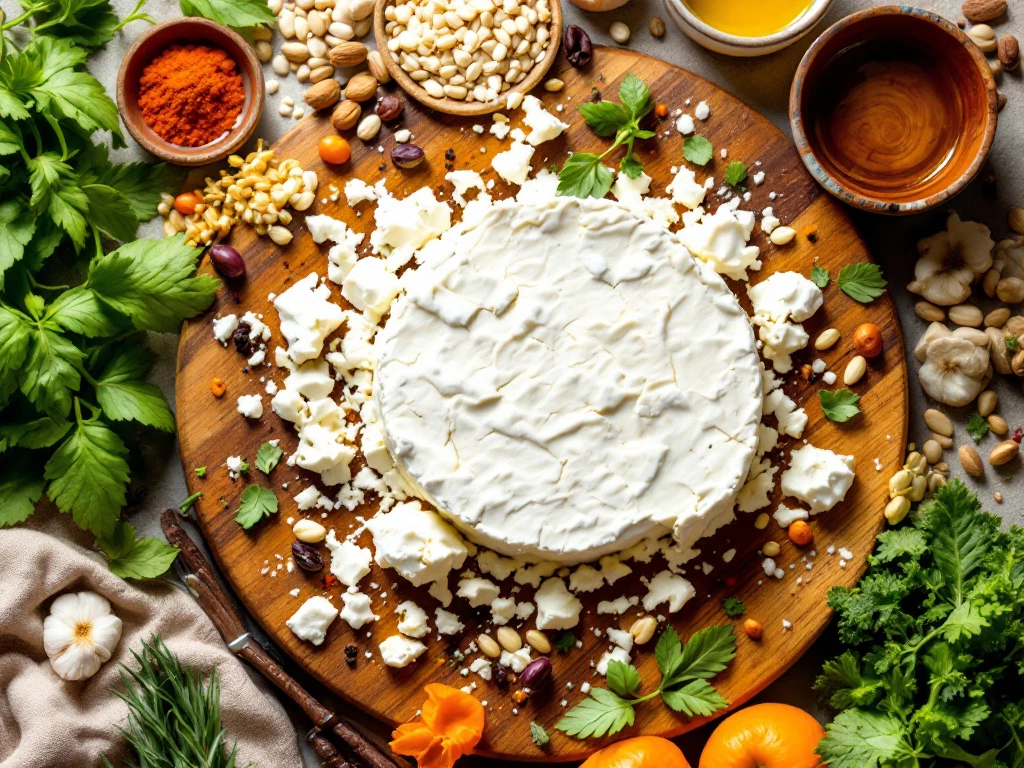Goat cheese serves as an exceptional bridge ingredient in plant-forward cooking, offering a way to create satisfying vegetarian and flexitarian dishes without sacrificing flavour or nutritional value. Its unique tangy profile, creamy texture, and versatility in both hot and cold preparations make it ideal for reducing meat consumption whilst maintaining protein content. The distinctive characteristics of goat cheese, including its lower lactose content and different protein structure compared to cow milk cheese, make it more digestible for many people, allowing them to enjoy dairy in their plant-based meals.
Understanding goat cheese in plant-forward cuisine
Goat cheese has emerged as a cornerstone ingredient in modern plant-forward cooking, bridging the gap between traditional dairy consumption and contemporary vegetarian dining. Its lighter digestibility compared to cow’s milk cheese makes it an attractive option for those transitioning to more plant-based eating patterns. The unique protein structure in goat cheese, combined with its naturally lower lactose content, allows many individuals who struggle with traditional dairy to incorporate this nutritious ingredient into their meals.
The role of goat cheese in reducing meat consumption whilst maintaining satisfying, protein-rich dishes cannot be overstated. Fresh goat cheese varieties, including crumbles and spreads, provide approximately 16-20% protein content, making them valuable additions to vegetarian meals. These products offer complete proteins containing all essential amino acids, helping to ensure nutritional balance in plant-forward diets.
For flexitarian diners seeking to reduce their environmental footprint without completely eliminating animal products, goat cheese presents an ideal compromise. Its production typically requires less resources than beef or pork, whilst still delivering the umami satisfaction and creamy mouthfeel that many associate with traditional meat-based dishes.
What makes goat cheese ideal for vegan-inspired cooking?
The distinctive characteristics of goat cheese make it particularly well-suited for plant-based cuisine enhancement. Its naturally tangy flavour profile adds depth and complexity to vegetable-forward dishes without overwhelming delicate plant flavours. The bold taste means smaller portions create significant impact, allowing cooks to use cheese as an accent rather than a main component.
Fresh goat cheese varieties demonstrate remarkable versatility across temperature ranges. Cold applications showcase its creamy texture in salads and spreads, whilst heated preparations reveal its excellent melting properties in gratins, pizzas, and pasta dishes. Ripened goat cheese options, including goat brie, develop additional flavour complexity through traditional ageing processes, offering spicy and creamy notes that complement roasted vegetables beautifully.
The texture variations available in goat cheese products, from smooth spreads to firm crumbles and soft-ripened varieties, provide creative flexibility in plant-based cooking. Goat cheese pearls marinated in herbs and spices offer both visual appeal and flavour enhancement, whilst fresh cheese pucks provide convenient portion control for individual servings.
How do you pair goat cheese with plant-based proteins?
Creating harmonious combinations between goat cheese and meat alternatives requires understanding complementary flavours and textures. Tempeh’s nutty, earthy notes pair exceptionally well with fresh goat cheese crumbles, particularly when both are incorporated into grain bowls or warm salads. The fermented qualities in both ingredients create a complex flavour profile that satisfies umami cravings.
Tofu benefits from goat cheese’s assertive flavour, especially when preparing stuffed dishes or layered casseroles. Firm tofu can be hollowed out and filled with herbed goat cheese spread, then baked until golden. Similarly, seitan’s wheat-based texture provides an excellent canvas for goat cheese sauces, creating dishes reminiscent of traditional meat and cheese combinations.
Legume-based dishes achieve new dimensions when enhanced with goat cheese. Consider these successful pairings:
- Lentil salads topped with honey-flavoured goat cheese crumbles
- Chickpea patties served with goat cheese spread as a condiment
- Black bean enchiladas featuring melted goat cheese
- Quinoa bowls finished with natural goat cheese pearls
- Portobello mushrooms stuffed with goat cheese and walnut mixture
Which vegetables work best with goat cheese in meatless dishes?
Roasted vegetables and goat cheese create particularly successful flavour marriages in plant-forward cooking. Beetroot’s earthy sweetness contrasts beautifully with goat cheese’s tanginess, especially when using ripened varieties with truffle flavours. Butternut squash develops caramelised edges during roasting that complement the creamy texture of fresh goat cheese spreads.
Raw vegetable applications showcase goat cheese’s versatility in cold preparations. Leafy greens like rocket and spinach provide peppery notes that balance goat cheese’s richness. Cherry tomatoes burst with acidity that cuts through the cheese’s creaminess, whilst cucumbers offer refreshing crunch. These combinations work particularly well with goat cheese pearls in herb-infused oils, which double as ready-made dressings.
Grilled vegetables develop smoky characteristics that enhance goat cheese’s complex flavour profile. Aubergine slices become silky when grilled and topped with goat cheese crumbles, creating a satisfying texture contrast. Courgettes, peppers, and asparagus all benefit from a final garnish of fresh goat cheese, which melts slightly from residual heat whilst maintaining its distinctive character.
Key takeaways for using goat cheese in plant-forward cooking
Successfully incorporating goat cheese into vegan-inspired dishes requires attention to portion control and temperature management. The concentrated flavour of quality goat cheese means smaller amounts create significant impact, typically 20-30 grams per serving provides ample taste whilst maintaining the plant-forward focus of the dish. Temperature considerations prove crucial, as fresh goat cheese melts differently than aged varieties, with spreads offering smooth incorporation into sauces whilst crumbles maintain texture in salads.
Quality matters significantly when selecting goat cheese for plant-based cuisine. Traditional producers who follow time-honoured recipes create products with superior flavour development and texture. These artisanal goat cheeses, made from milk sourced from local farms, support sustainable agricultural practices that align with plant-forward dining philosophies.
The future of plant-forward cooking increasingly embraces high-quality dairy products like goat cheese as strategic ingredients rather than primary components. This approach allows diners to enjoy the nutritional benefits and flavour enhancement of traditional cheese-making whilst maintaining a predominantly plant-based diet. As more foodservice operations and home cooks discover the versatility of goat cheese in vegetarian applications, we continue to see innovative uses that push the boundaries of plant-forward cuisine.
